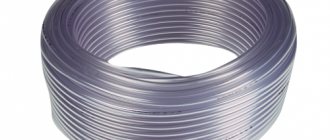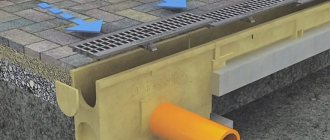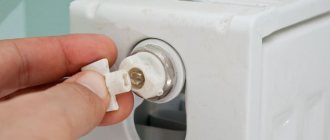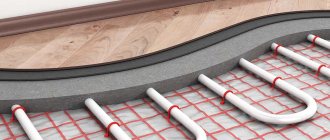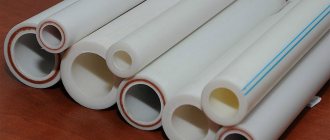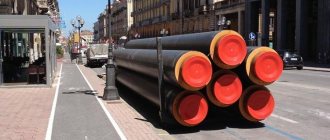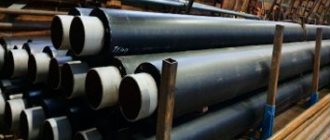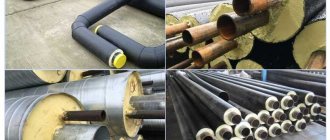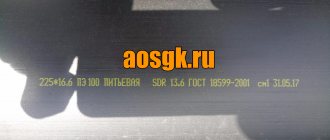Welcome!
Today it is difficult to imagine a house without electricity, telephony, Internet, television and other benefits of civilization. Behind this prosperity are billions of kilometers of cable and wires laid on and under the ground, inside and on the surface of the walls of buildings. Special boxes and metal hoses, in particular metal hoses in PVC insulation, help to minimize the aggressive impact on the environmental highway. This is what we will be talking about in today’s review.
What is a metal sleeve
A metal hose is a flexible metal pipeline designed to protect cables, wires and pipes laid inside it from premature wear as a result of external influences (ultraviolet radiation, moisture, mechanical damage, etc.).
A metal hose in PVC insulation differs from a conventional one in the presence of a surface protective sheath made of polyvinyl chloride (PVC). It provides reliable tightness, tensile strength without loss of flexibility, resistance to corrosion and, most importantly, fire safety of the circuit and protection from electric shock.
The schematic structure of a metal hose with PVC insulation is shown in the photo below:
Interesting! The ancestor of the modern metal sleeve is considered to be a necklace made using the gooseneck technique at the end of the 19th century by the jeweler Heinrich Witzemann.
Metal sleeves are used for laying:
- electrical wiring;
- communication lines (telephone, radio and Internet);
- elevator power cables;
- ventilation and heating pipes;
- hoses for air conditioning, ventilation and smoke removal systems;
- transportation lines for bulk products, etc.
Alternative systems
Today, a wide variety of products are produced that allow cable installation to be carried out conveniently and quickly. For this we use:
- plastic corrugation. The advantages include the lightness and flexibility of the material.
Good to know! Corrugation can be used for both types of wiring - external and hidden. The disadvantage is its fragility. Under mechanical stress it may crack or break.
- perforated and simple cable channels. These products are intended for installation of external wiring only. A big advantage of the cable channel is the presence of a removable cover. It will provide access to the wire when the need arises. Manufacturers also took care of the aesthetic appeal of such products. Therefore, on the market today you can find cable channels not only in white, but also in wood-colored products. The fact that the material is inflexible is their disadvantage, since installation is fraught with some difficulties
- metal trays of appropriate design and geometry. They are most in demand in the field of industrial production, as they effectively prevent cable damage under significant mechanical stress.
Metal sleeves are available with different colors of the outer covering, so you can choose a shade that matches the color scheme of the room
Main characteristics
The metal hose is made of galvanized, stainless, tinned steel or aluminum and covered with a layer of elastic plastic in black or gray. The modular pipe system prevents the formation of microcracks in the body when bending.
- The steel structure and PVC coating belong to the class of fire-resistant, self-extinguishing materials that do not support combustion.
- The PVC layer acts as a dielectric.
- Working pressure – 0.5-1.4 MPa.
- Maximum temperature: 300⁰С (for modifications without seals and with an asbestos layer);
- 100⁰С (for models with a cotton layer).
On a note! Unlike rigid metal hoses made of solid sheet metal, flexible pipelines do not change the configuration of the internal passage when bent.
Designation when ordering the GERDA-SG connector TU1690-020-45416838-2008
| Example of designation when ordering | Connector Description |
| GERDA-SG-16-N-M20x1.5 TU1690-020-45416838-2008 | Connector for sealed metal hose DN=16mm (GERDA-MG-16), with external thread M20x1.5 |
| GERDA-SG-22-Tr TU1690-020-45416838-2008 | Connector for a sealed metal hose DN=22mm (GERDA-MG-22) for connection to a pipe with an outer diameter of 24.5…28.0 mm. No pipe threading required for connection |
| Table 4. Permissible outer diameter of the pipe for the “Tr” connector | |||||||||||||
| Pipe connector designation | Permissible outer diameter of pipe Dн, mm | ||||||||||||
| GERDA-SG-16-Tr | 19,5…22,0 | ||||||||||||
| GERDA-SG-22-Tr | 24,5…28,0 | ||||||||||||
| GERDA-SG-25-Tr | 31,4…34,2 | ||||||||||||
| GERDA-SG-35-Tr | 39,5…42,9 | ||||||||||||
| GERDA-SG-40-Tr | 47,9…51,5 | ||||||||||||
— serves to create a reliable electrical connection between the connector and the body of the electrical equipment; when tightened, the sharp teeth of the nut cut off the paint on the body of the electrical equipment and come into direct contact with the metal
Types of metal sleeves
| Signs of classification | Categories | Features / Markings |
| Type of pipe material (determines mechanical strength, corrosion resistance, temperature conditions) | Galvanization | C |
| Tinned steel | SL | |
| Stainless steel | N | |
| Aluminum | Al | |
| Forming method | "Harmonic" | Limited flexibility |
| Coil molding | Leakage | |
| PVC Coated Coil Spring | 100% tight | |
| Type of interturn seal (determines the level of tightness and temperature conditions of operation) | Without seal | |
| Cotton padding | X | |
| Asbestos sealant | A | |
| Nylon seal | N | |
| Synthetic polyamide seal | JV | |
| Coating material | Without cover | R3-C |
| PVC sheath | NG, UHL, LSHF, MRPI, MPG, SHEM | |
| Lock connection type | Sealed | P1, P2 |
| Leaky | P3 |
Metal hoses are available in various sizes:
- The cross-section diameter varies from 10 to 80 mm.
- The length of the pipes ranges from 10 to 50 meters.
Symbol when ordering an additional nut TU1690-020-45416838-2008
| Example of designation when ordering | Description of the nut |
| GP-K1/2″ TU1690-020-45416838-2008 | Flat nut for sealed metal hose connector GERDA-SG-16-N-K1/2″ |
| GE-M25x1.5 TU1690-020-45416838-2008 | Equipotential nut for sealed metal hose connector GERDA-SG-22-N-M25x1.5 |
| Table 5. | |||||||||||||
| For a sealed metal hose | Order code for GERDA-SG connector N - external thread B - internal thread Tr - for pipe M - metric (1) thread K - tapered inch NPT (2) | Dimensions of connector (3) GERDA-SG, mm | Flat nut GP | Equipotential nut GE | |||||||||
| GP nut order code | Size(3),mm | GE nut order code | Size(3),mm | ||||||||||
| Inner hole diameter, mm | A | B | Key C | Key E | Key D | A | Key B | A | Key B | ||||
| GERDA-MG-16 | GERDA-SG-16-N-M20x1.5 | 13,9 | 37 | 13 | 29 | 27 | — | GP-M20x1.5 | 3 | 24 | GE-M20x1.5 | 3,7 | 24 |
| GERDA-SG-16-V-M20x1.5 | — | — | — | — | — | — | |||||||
| GERDA-SG-16-N-K1/2″ | GP-K1/2″ | 4 | 27 | — | — | — | |||||||
| GERDA-SG-16-V-K1/2″ | — | — | — | — | — | — | |||||||
| GERDA-SG-16-Tr(4) | 58 | — | 30 | 36 | 36 | — | — | — | — | — | — | ||
| GERDA-MG-22 | GERDA-SG-22-N-M25x1.5 | 18,5 | 40 | 15 | 35 | 33 | — | GP-M25x1.5 | 3,5 | 30 | GE-M25x1.5 | 4,5 | 30 |
| GERDA-SG-22-V-M25x1.5 | — | — | — | — | — | — | |||||||
| GERDA-SG-22-N-K3/4″ | GP-K3/4″ | 4 | 32 | — | — | — | |||||||
| GERDA-SG-22-V-K3/4″ | — | — | — | — | — | — | |||||||
| GERDA-SG-22-Tr(4) | 60 | — | 36 | 41 | 46 | — | — | — | — | — | — | ||
| GERDA-MG-25 | GERDA-SG-25-N-M32x1.5 | 23,8 | 46 | 15 | 45 | 43 | — | GP-M32x1.5 | 4 | 41 | GE-M32x1.5 | 5 | 41 |
| GERDA-SG-25-V-M32x1.5 | — | — | — | — | — | — | |||||||
| GERDA-SG-25-N-K1″ | GP-K1″ | 7 | 36 | — | — | — | |||||||
| GERDA-SG-25-V-K1″ | — | — | — | — | — | — | |||||||
| GERDA-SG-25-Tr(4) | 66 | — | 46 | 46 | 50 | — | — | — | — | — | — | ||
| GERDA-MG-35 | GERDA-SG-35-N-M40x1.5 | 31,8 | 52 | 16 | 54 | 52 | — | GP-M40x1.5 | 5 | 46 | GE-M40x1.5 | 6 | 50 |
| GERDA-SG-35-V-M40x1.5 | — | — | — | — | — | — | |||||||
| GERDA-SG-35-N-K1.1/4″ | GP-K1.1/4″ | 7 | 46 | — | — | — | |||||||
| GERDA-SG-35-V-K1.1/4″ | — | — | — | — | — | — | |||||||
| GERDA-SG-35-Tr(4) | 72 | — | 55 | 55 | 60 | — | — | — | — | — | — | ||
| GERDA-MG-40 | GERDA-SG-40-N-M50x1.5 | 36,8 | 56 | 18 | 63 | 60 | — | GP-M50x1.5 | 5 | 55 | GE-M50x1.5 | 6,2 | 60 |
| GERDA-SG-40-V-M50x1.5 | — | — | — | — | — | — | |||||||
| GERDA-SG-40-N-K1.1/2″ | GP-K1.1/2″ | 7 | 55 | — | — | — | |||||||
| GERDA-SG-40-V-K1.1/2″ | — | — | — | — | — | — | |||||||
| GERDA-SG-40-Tr(4) | 74 | — | 65 | 65 | 70 | — | — | — | — | — | — | ||
1 - metric thread M according to GOST 24705-2004 (ISO 724:2003) with a pitch of 1.5. 2 - NPT thread corresponds to the Russian thread standard K (GOST 6111-52, tapered inch with a profile angle of 60 degrees). 3 are for reference only, dimensions may be changed by the manufacturer without prior notice. 4 – the permissible pipe diameter for the pipe connector is indicated in Table 4
Tips for choosing
To install flexible secure communications, you need to competently approach the issue of choosing a metal hose with an insulating PVC coating:
- The climatic class of the product is taken into account, which is indicated by the manufacturer in the technical data sheet.
- The diameter of the internal cross-section is selected based on the total volume of cables required for installation in the trunk. To do this, the total diameter of the cables is multiplied by a factor equal to 1.5 or 2. The filling of the corrugation should not exceed 70% of the volume of the pipeline.
- The pipe material, type of interturn seal and wall thickness must correspond to the operating conditions of the metal hose. Models without a seal or with a cotton inter-turn gasket are intended for indoor use with normal humidity.
- Asbestos - in conditions of increased fire hazard and the possibility of local heating.
- Polypropylene - in the ground, outdoors and in conditions of high humidity, incl. under conditions of direct immersion in water (relevant for models with a high coefficient of tightness).
The markings applied to the pipes and indicated in the model name help to make the right choice:
- MRPI is a flexible metal hose with a polymer coating.
- P1 and P2 are hermetic and explosion-proof hoses, P3 is non-hermetic.
- NG – does not support combustion. PVC insulation made using self-extinguishing plasticizers is usually gray in color.
According to the selected pipes, fittings are also selected, providing fastening of individual sections of the pipeline to each other and a method of fixation on the installation plane (in grooves, on walls, in a suspended state, etc.).
Pipe connector GERDA-SG-Tr
The GERDA-SG-Tr connector allows you to easily connect the GERDA-MG sealed metal hose to a pipe (see Figure 3). In this case, no threading is required on the pipe. The connector is very firmly attached to the pipe thanks to the collet ring (8). The tightness of the connection with the pipe is ensured by an elastomeric sealing ring (6). Connector dimensions and pipe diameters are shown in Table 4.
Figure 3. GERDA-SG-Tr connector on a pipe. No pipe threading required
- disassembled
- in assembled condition
approximate price
The cost of metal hoses depends on many factors: the materials from which they are made, the structure of the polymer, the tightness class, the cross-sectional area, the country of origin, etc. The price is indicated, as a rule, for 1 linear meter, sometimes for a package (coil) 25 or 50 meters long.
| Brand | A country | Model | Diameter, mm | Price, rub./1m |
| Promsleeve | Russia | R3-CP-NG-20 | 20 | 71 |
| IEK | Russia | R3-TsPng-08 | 8 | 34 |
| DKC | Russia | 6071T-050 | 50 | 83 |
| FORTISFLEX | China | IGPng | 32 | 35 |
| TDM | China | R3-C-P | 15 | 60 |
| KVT | Russia | R3-TSPng-LS | 15 | 50 |
Types of corrugated metal hoses
According to the molding method, the sleeve is divided into:
- Accordion type. It is completely sealed and holds its shape perfectly. It is usually made of stainless steel. It has two serious drawbacks: it is very expensive, and limited in flexibility. Curvature radius up to 20 sleeve diameters. If you bend it too much, it will simply burst. It is used to a limited extent, only for use in special conditions.
- Mass corrugation of turn type. The most common hose: used without restrictions both in industrial facilities and in residential premises. Complex configuration of joints: on the one hand, allows you to obtain a strong, unbreakable pipe, on the other hand, the hose can be bent to small radii. The only drawback is that the coil sleeve is not sealed. If moisture gets inside, it stays there for a long time.
- Corrugated with PVC coating. A polyvinyl chloride sleeve is located on top of the coil spring. Flexibility is reduced, but the pipe becomes completely sealed. The strength characteristics are unchanged: steel coils protect from mechanical stress. Fire safety is also not reduced: flame propagation does not occur in a closed environment.
According to the material of the main shell:
- Mostly, the coiled metal hose is made of galvanized steel. This is a relatively inexpensive material that resists corrosion for a long time. If the corrugation is static after installation, its service life is measured in decades.
- For suspended installation, when the hose can move, it is better to use stainless corrugation. The galvanic zinc coating on the coils does not wear off; the steel is more durable than galvanized steel: such a hose is almost eternal.
- A sealant is placed between the turns to provide tightness and reduce friction. This can be asbestos thread, cotton fabric, or polypropylene film. Of course, 100% tightness is not ensured, but the gasket protects against raindrops and local splashing.
Temperature Range
A separate point is to consider the range of permissible temperatures when installing corrugations and cables. For example, the P3-C wire can be used within the range from -40 to +100 degrees. Celsius. If PVC is added to this abbreviation, the range is significantly reduced and ranges from -5 to +60 degrees. However, short-term exposure to elevated temperatures up to +90 °C is acceptable (for example, during installation).
The change in operating temperatures (during operation) is practically within the same limits. The only exception is for the R3-Ts-PVC cable - the minimum level is -25 degrees. Celsius.
Operating principle
Corrugated protective shells are a breakthrough in the field of engineering communications. They increase the level of security of networks and open up new possibilities for hidden installation. Durable metal - a reliable and durable outer shell that is flexible, not heavy, and protects better than plastic.
If the cables are laid in the ground, the sheath has to experience increased stress. The soil pressing on the corrugation has less mechanical impact, since the stress is distributed. This allows you to significantly reduce the load per unit surface (compared to a smooth tube).
Note! There is one subtlety here - when laying the cable in the ground or screed, it is necessary to ensure that the soil adheres tightly to the surface of the sleeve. Voids lead to increased strain levels
Cables must be protected to avoid unpleasant consequences
Metal hose design
The metal hose is made of galvanized steel or stainless steel tape, on top of which a protective polymer shell is applied (see Figure 1). The polymer shell ensures complete tightness of the metal hose, protects against harmful environmental influences and significantly increases the tensile strength of the metal hose. The material used to make the polymer shell is listed in Table 2.
A cotton thread is laid between the turns of steel tape for compaction. The metal hose is manufactured in the following versions:
- “P” (increased strength) - made of a thicker metal strip and has a greater tensile strength;
- “HL” (cold-resistant) - operating temperature from -60°C;
- “ECHL” (for extremely cold climates) - operating temperature from minus 70°C;
- “T” (heat-resistant) – metal hose resistant to elevated temperatures, operation up to +200°C;
- “M” (oil and gasoline resistant) - a shell resistant to oil and gasoline (tests according to GOST IEC 60811-2-1-2011);
- “X” - chemical resistance to acids and alkalis;
- “ZG” (rodent protection) is a shell of increased hardness, resistant to rodents, ants and termites. It has maximum abrasion resistance - essential for underground installation. Resistant to ultraviolet and solar radiation. Excellent chemical resistance to many acids and alkalis.


